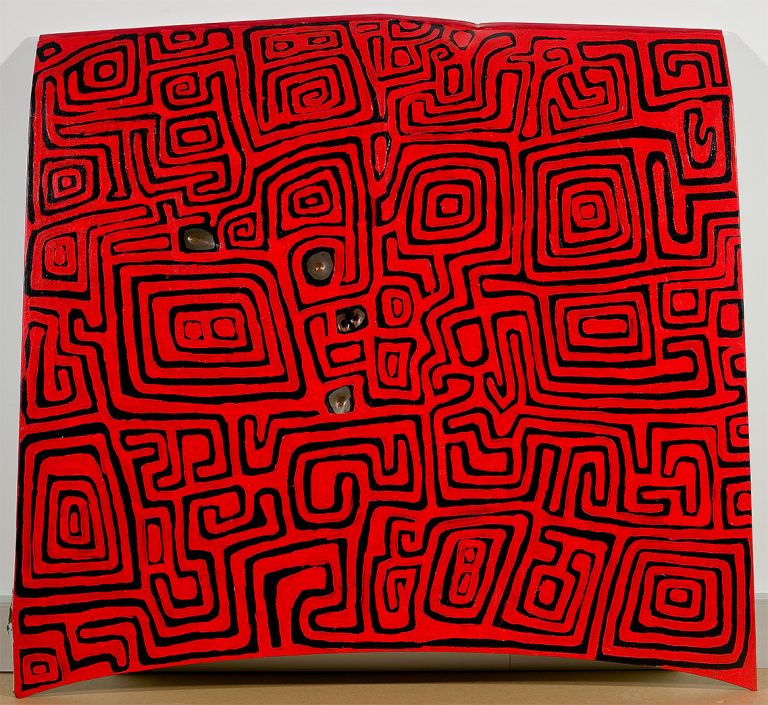We acknowledge the Traditional Owners of the land on which the Queensland Art Gallery | Gallery of Modern Art stands and recognise the creative contribution First Australians make to the art and culture of this country.

Jackie Kurltjunyintja Giles / Pintubi/Ngaanyatjarra people / Australia 1937–2010 / Valiant 2007 / Synthetic polymer paint on metal / 152 x 142 x 10cm / Purchased 2008. The Queensland Government’s Gallery of Modern Art Acquisitions Fund / Collection: Queensland Art Gallery | Gallery of Modern Art / © Jackie Kurltjunyintja Giles
Jackie Kurltjunyintja GILESValiant 2007
Not Currently on Display
Malu (kangaroo) is Jackie Kurltjunyintja Giles’s tjukurrpa (dreaming), and in Valiant 2007, he depicts the epic journey of this ancestral kangaroo on a car bonnet. The designs of his maze-like paintings relate to ceremony, and especially to rainwater filling the channels in the lakes region on the edge of the Gibson Desert.
These designs can be found incised on pearl shells, which are connected to rain-making ceremonies and spirits and which are traded throughout the desert. Only men with a high degree of traditional knowledge paint these designs. The bullet holes incorporated into this work highlight an everyday practice in remote Australia — the use of signs and discarded metal objects for target practice.
Jackie Kurltjunyintja Giles was born at Tjamu Tjamu, his father’s country, east of Kiwirrkurra, near Lake Mackay, on the border of Western Australia and the Northern Territory.
Giles and his family were some of the last nomadic desert peoples forced into settled life; they were ‘brought in’ to Warakurna and Warburton mission in Western Australia in the 1950s.
Giles was a revered healer with extensive knowledge of ceremony, song and the dreamings from the Western Desert; he travelled extensively attending and performing ceremony, and was fluent in many desert languages.
Discussion Questions
1. Why are cars so important to everyday life in the desert?
2. How does this artwork explore the difficulty of dealing with isolation and the hardships of living in the desert?
3. If you were living in the desert, how would you repurpose car parts, in particular a car bonnet?
Classroom Activities
Choose a discarded, man-made object and paint an image on its surface; apply an undercoat of primer or gesso prior to painting the object. Your image should refer to the place where the object was found or used. Photographs of local plants and buildings or a street map of the area could be used as reference points in the new presentation of the object.